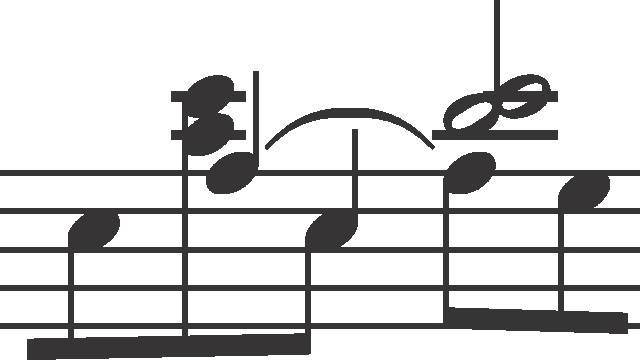



Issues : Inaccuracies in GE
|
b. 12
|
composition: Op. 21, Concerto in F minor, Mvt II
..
The two-quaver slur of A is most probably inaccurate (cf. similar figures in, e.g., the previous bars). Therefore, in the main text we give a longer slur, corresponding to the slurring of analogous figures. A similar solution was adopted in GE2. The half-bar slur of the remaining editions is certainly an arbitrary decision of the engraver of GE1. category imprint: Interpretations within context; Differences between sources issues: Inaccuracies in GE , Inaccurate slurs in A , GE revisions |
|||||||||||
|
b. 14-15
|
composition: Op. 21, Concerto in F minor, Mvt II
..
The slur of A undoubtedly begins from the 2nd quaver of the bar, hence the fact that it starts earlier in GE1 (→FE) is most probably a mistake. On the other hand, it is uncertain which note the slur of A is supposed to reach. A comparison with two analogous situations (bars 33 and 82) as well as separation of bass notes through articulation performed by Chopin in the entire movement tip the scales in favour of the slur ending together with the last chord in the bar. The interpretation adopted in the main text is present also in GE2. In GE1 the slur in bar 14 ends in a similar manner, yet in bar 15 one can see traces of deletion of the slur reaching the 1st quaver. It explains leading the slur from bars 14 until the beginning of bar 15 in FE. category imprint: Graphic ambiguousness; Differences between sources issues: Inaccuracies in GE , Errors in EE , Inaccurate slurs in A , GE revisions |
|||||||||||
|
b. 15
|
composition: Op. 21, Concerto in F minor, Mvt II
..
In GE1 bar 15 opens a new page, which contributed to an inaccuracy in reproducing the slur in the R.H.: the slur running from the previous bar has no continuation on the new page. We interpret it in accordance with the way it was interpreted in FE (→EE). It is only in GE2 that the slur is compatible with the notation of A (although from the practical point of view, a sequence of slurs present in the remaining editions is only a strange manner of writing the same execution). category imprint: Differences between sources issues: Inaccuracies in GE , GE revisions |
|||||||||||
|
b. 15
|
composition: Op. 21, Concerto in F minor, Mvt II
..
The notation of A may raise certain doubts here: the line combining both a
Omission of the stem extending e category imprint: Differences between sources issues: Inaccuracies in GE |
|||||||||||
|
b. 17
|
composition: Op. 21, Concerto in F minor, Mvt II
..
A vertical slur written in A before the c2-c3 octave designates an arpeggio: it is just a simplified form of the standard wavy line, cf. e.g. the last chord in the 3rd movement, bar 484. In that period of Chopin's life the simplification process had just begun, hence a misunderstanding of this notation on the part of engravers is understandable. category imprint: Interpretations within context; Differences between sources issues: Inaccuracies in GE |











 in
in 
 . The notation of
. The notation of 
